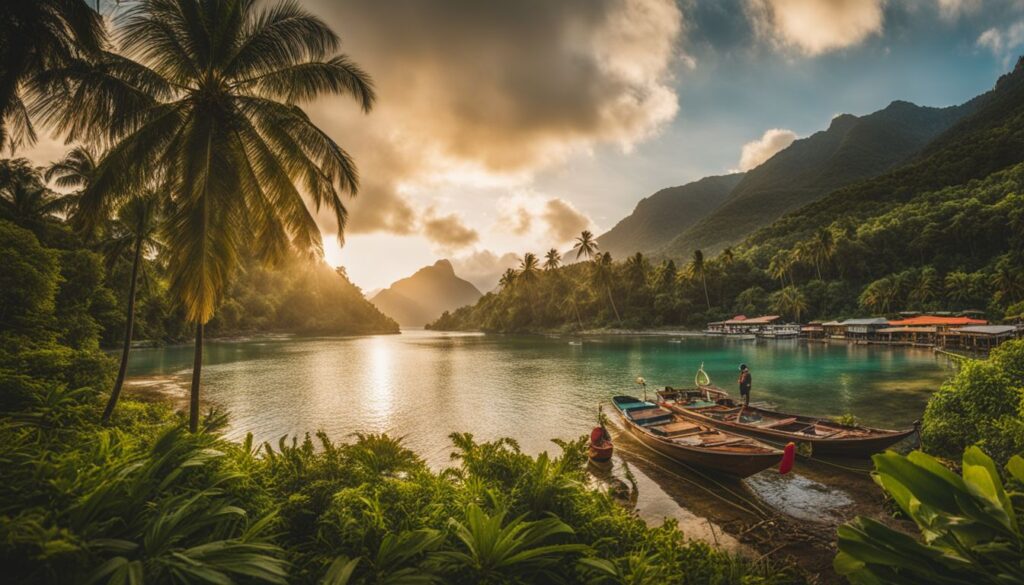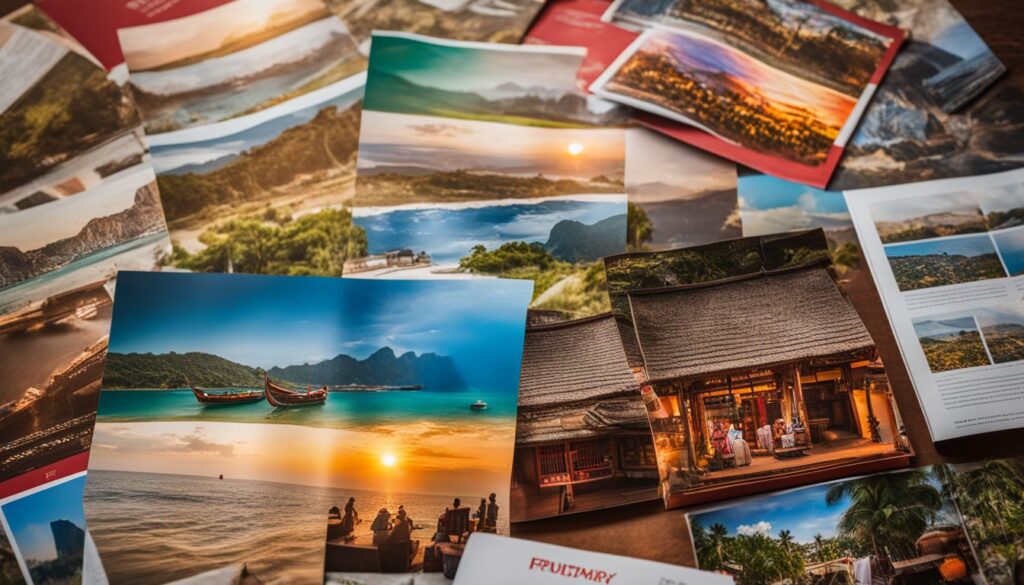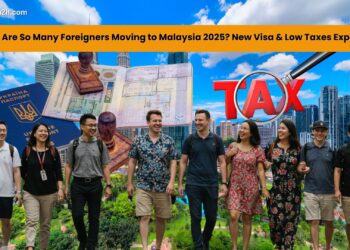Comparing MM2H Vs Southeast Asia Programmes: Which Visa Programme Is Right For You?
Navigating the myriad of visa programs for settling down in Southeast Asia can feel like a maze. I understand, as navigating website after website left me scratching my head, trying to decode the complexities.
But don’t worry! With an emphasis on Malaysia’s MM2H (Malaysia My Second Home) among other Southeast Asian gems, I’m here to untangle the web of confusion for you. This piece will delve into comparing policies, financial requirements, and offer a glimpse into what life could be like in each spot.
Stick around to discover your ideal haven!
Key Takeaways
- MM2H asks for a bank deposit and income, but offers long stays in Malaysia. Sarawak’s version is cheaper.
- Southeast Asia visas vary by country, letting people live, retire, or start businesses with different costs.
- Comparing MM2H to other visas means looking at money, lifestyle, and where you want to be.
- Think about what you need – like money and where to live – before picking MM2H or another visa.
- Some countries are easier to move to quickly than others. Each place has its own culture and community feel.
Deep Dive into MM2H Programme

Exploring MM2H is like opening a door to live in Malaysia. This plan asks for some money in the bank and a monthly income to join.
Eligibility and Visa Application Process
Choosing the right visa program is a big deal for me. So, I took my time to understand the details of both the MM2H program and Southeast Asian visas. Here’s what I found about getting into the MM2H program.
First thing, I learned that there are different rules for who can apply. For the federal MM2H, I need to show I have at least RM1,000,000 in my bank account (this if before revamped program, now Government has announced The Three Tier System). But if I choose Sarawak’s version, it drops to RM150,000 for single applicants and RM300,000 for couples. That’s a huge difference!
Next up is where I can stay. With the federal plan, they want me to live in Malaysia for at least 90 days a year (now 60 days a year after latest announcement by Government, you can refer here). Sarawak asks for just 30 days. This is great because it gives me some flexibility on how much time I spend there.
Now let’s talk money again but this time about income. The big program wants me to earn at least RM408,000 a year (the revamped program still not yet announced about the income). In Sarawak, it’s way less—only RM84,000 needed.
Here comes the exciting part, the revamped program of MM2H: depending on how much money I put in a fixed deposit, there are three levels or “tiers” that decide how long I can stay in Malaysia. The silver and gold tiers give me five years or fifteen years of residency. If I go all out for platinum, they might even let me stay forever as a permanent resident.
For someone like me applying to these programs, figuring out which one fits best takes some thought about where to live and how much money to put aside.
Understanding each step of this process makes everything seem more attainable and less like a far-off dream of living in Malaysia or another beautiful Southeast Asian country.
Advantages of Opting for MM2H
I get it, choosing the right visa program is a big step. The MM2H program stands out for a few reasons. For starters, this Malaysia My Second Home (MM2H) plan lets me live in Malaysia with less hassle.
I don’t need to worry too much about complicated rules. Plus, the process to apply got clearer and simpler.
The costs make sense too. With MM2H, I only have to put down a smaller deposit if I choose Sarawak’s version of the program—that’s just RM150,000! And living there isn’t too pricey either since they ask for an income that seems doable for many people from different places.
I also heard that picking MM2H means I’m helping out Malaysia more than just by spending my money there. By being part of this program, folks like me boost jobs and help make Malaysia known as a great spot for longer visits or even forever homes.
It feels good knowing I can enjoy living in such a beautiful place while also giving back in my way.
Southeast Asia Visa Programmes Explored

When we talk about Southeast Asia visa programs, think of a big menu with lots of dishes. Each country has its own set of rules and benefits, making each visa unique like a special dish.
From retirement to startup visas, these countries offer choices that fit different tastes and needs. Whether you want to enjoy the beaches in Thailand or start a business in Singapore, there’s likely a visa for you.
Variety in Visa Offerings
Southeast Asia has a lot of different visas. Some are for starting a business, while others let you live there because you’re retired or have enough money to invest. This makes it easy for people from many countries to find one that fits their needs.
Each Southeast Asian country offers a unique path to explore, from golden passports to retirement heavens.
I love how these programs give choices based on what I want in life. Whether I dream of opening a small café in Thailand or spending my winters on the beaches of Malaysia, there’s an option out there for me.
Pros of Choosing Southeast Asia Visas
Southeast Asia offers a mix of visa options, making it great for many people. You can find everything from retirement visas to investor visas and even startup visas. Each country in this region has its own rules, which means I can pick what fits my plans best.
For example, the Thailand Elite Residence Program gives perks like airport services and visa renewal help.
Getting a visa here often costs less than programs in Europe or North America. This is good news for me because I want to save money while enjoying a new place. Also, these countries are beautiful, with lots to see and do.
Living in Southeast Asia lets me explore new cultures easily without spending a lot on living costs or travel.
MM2H Vs Southeast Asia Programmes: A Comparative Analysis

Deciding between MM2H and other Southeast Asian visa programs means looking at rules. We check costs, lifestyle, and culture in each place.
Comparison of Visa Policies
MM2H visa policy asks for a big deposit, living in Malaysia for some days, and earning a good amount each year. The new rules make it easier. Now, people have three options for how much to put in the bank: Silver, Gold, or Platinum.
This gives folks flexibility depending on their budget.
Southeast Asia visas are different. They offer many types of visas based on what you want to do or how long you plan to stay. Some countries let you invest money there as a way to get residency faster.
Flexibility is key when comparing MM2H with other Southeast Asian visa policies.
Financial Implications
Talking money, choosing between MM2H and other Southeast Asian visa programs brings up big differences. For the MM2H program in Malaysia, I need to show I have a good chunk of change.
Sarawak’s version is a bit easier on the wallet though.
On the flip side, looking at visas around Southeast Asia paints a different picture. Each country has its own set-up with various costs tied to getting and keeping your visa sorted out.
Some places might woo you with lower living costs or cheaper entry requirements which can be quite attractive compared to Malaysia’s ask for those big deposits and high yearly incomes.
This whole thing really makes me weigh where my money goes further and what kind of life that buys me in each place.
Cultural and Lifestyle Variances
Moving to Malaysia with the MM2H program, I get to see how different life can be. The country offers a mix of cultures. You find food from everywhere, and people are open to sharing their traditions.
I learn something new every day about living here. From big cities like Kuala Lumpur to quiet places in Sarawak, each spot has its own way of life.
Comparing this with other Southeast Asian countries, they also have their unique ways. Places like Thailand and Indonesia show me how diverse Asia is. Each country focuses on certain things that make them special.
For example, some might have more beaches and nature, while others shine with their city lights and tech hubs. It’s all about what fits you the best when picking a place to stay long-term.
Decision Guide: MM2H or Southeast Asia?
Choosing between MM2H and Southeast Asia visa programs can be tricky. Each option has its own perks, so here’s a guide to help you decide.
- Think about where you want to live. If Malaysia feels like home, MM2H is your go – to. For a more broad experience in the region, consider Southeast Asian options.
- Look at your finances closely. MM2H may need a bigger deposit upfront, especially with recent changes making it more realistic for expats. Southeast Asia programs might offer more variety in financial commitments.
- Age matters too! The revised MM2H made things easier for younger applicants by lowering age requirements.
- What lifestyle are you after? Malaysia offers a unique blend of modernity and tradition. If variety is what you seek, hopping between countries in Southeast Asia could be more exciting.
- Long – term plans are key. If gaining citizenship sounds appealing, check which programs lead there. Not all do.
- Processing times vary greatly, so ask yourself how quickly you want to make the move. Some Southeast Asian visas get processed faster than MM2H.
- Finally, consider community and language. Living in Malaysia might mean an easier time integrating and possibly less of a language barrier compared to other Southeast Asian nations.
- Sarawak’s version of MM2H comes with different rules—a good choice if federal requirements seem too much but you still love Malaysia.
Each point touches on essential factors—where you’ll live comfortably, how well your finances align with program demands, and personal preferences towards lifestyle and integration into the community—are crucial in making this big decision.
Conclusion
So, we’ve looked at MM2H and Southeast Asia visa programs. Both have their perks, depending on what you’re after. If easy living and spending more time in Malaysia sounds good, MM2H might be your pick.
But if exploring different places with a variety of visas excites you, then Southeast Asia offers that spice of life. The key is to think about what fits your lifestyle and budget best.
Each choice leads to its own adventure, so pick the one that makes you nod your head with a “Yes, that’s for me.”.




